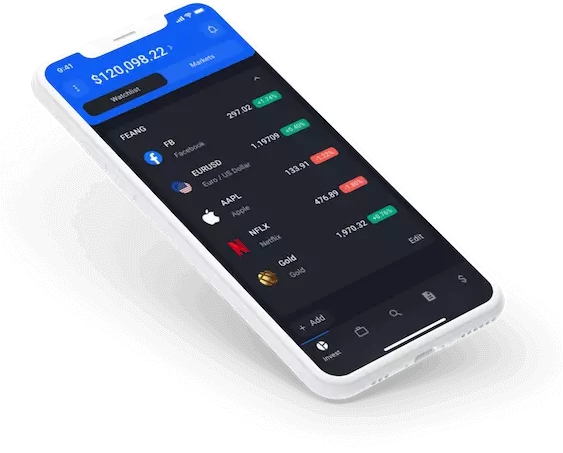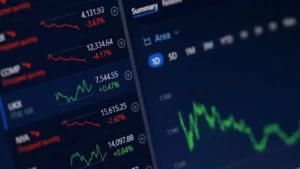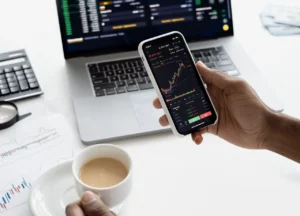Interactive Brokers is widely recognized among active traders for its advanced execution quality, global market access, and flexible platform integrations. The broker supports multiple interfaces, each designed for specific trading styles—from institutional-grade terminals to lightweight mobile apps. Understanding which platform best suits a particular strategy helps improve workflow efficiency and analytical precision.
Native Platforms Offered by Interactive Brokers
Interactive Brokers delivers proprietary solutions that address different levels of trading complexity. Its two primary interfaces—Trader Workstation (TWS) and IBKR Mobile—share one core advantage: direct connectivity to the broker’s liquidity and order routing system. Both applications synchronize portfolios in real time and provide consistent access to market data, orders, and reports.
Trader Workstation (TWS): Features and Best Use Cases
Trader Workstation is the most advanced tool in the IBKR lineup. Built for professionals and systematic traders, TWS provides direct access to stocks, options, futures, forex, bonds, and funds on more than 150 markets worldwide. The interface may appear dense at first glance, but it integrates deep market analysis with execution management on one screen.
Key features include:
- Order management: Over 60 order types, including bracket, one-cancels-other (OCO), and algorithmic orders.
- Market depth: Up to 200 price levels for certain instruments.
- Advanced charting: 120+ indicators and real-time tick data.
- Risk controls: Real-time margin and exposure monitoring.
- Integrated scanners: Custom filters for liquidity, volatility, and technical setups.
Best suited for: Portfolio managers, day traders using multiple assets, and those requiring institutional-grade control over execution. For new traders, TWS may require configuration time, but its flexibility compensates with precision and control.

Trader Workstation Overview
| Function | Description | Suitable for |
| Order Types | 60+ types with automation support | Active traders, quants |
| Charting Tools | 120+ indicators, multiple chart layouts | Technical analysts |
| Market Coverage | Global equities, FX, futures, options | Cross-asset traders |
| Risk and Margin Monitoring | Real-time analytics and alerts | Portfolio managers |
IBKR Mobile App: Trading on the Go
The IBKR Mobile application mirrors many TWS features while adapting to smaller screens. It allows full trade execution, account monitoring, and market analysis without desktop access. The app supports biometric login, push notifications for price alerts, and synchronized watchlists shared with other IBKR interfaces.
Main functions:
- Instant order entry: Place market, limit, and stop orders directly from charts.
- Quick access to global instruments: Over 135 exchanges covered.
- News and fundamentals: Integrated economic calendar and live updates.
- Portfolio view: Account summary, margin, and unrealized P/L updated in real time.
IBKR Mobile App Highlights
| Category | Details |
| Accessibility | Android & iOS, compatible with tablets and smartphones |
| Execution Speed | Comparable to desktop routing |
| Key Tools | Alerts, watchlists, scanners, news |
| Ideal For | Swing and position traders, mobile users |
Third-Party Platforms Compatible with Interactive Brokers
Many professionals prefer to connect external interfaces for custom charting, strategy testing, or automation. Interactive Brokers maintains robust integration support for major third-party systems, giving traders the option to combine IBKR’s execution backbone with specialized analysis environments.
MetaTrader 4 and 5 Integration
MetaTrader remains a common choice among forex and CFD traders for its scripting language (MQL) and community-developed indicators. Through IBKR APIs or bridge solutions from third-party vendors, MT4 and MT5 can route orders directly to an Interactive Brokers account.
Advantages:
- Custom expert advisors (EAs) for automated execution.
- Detailed order logs and backtesting engine.
- Access to IBKR liquidity with MT interface familiarity.
However, configuration requires an intermediary plugin or gateway, which may introduce latency compared with native TWS routing. Therefore, it suits algorithmic traders comfortable managing such technical connections.
NinjaTrader and MultiCharts Connections
NinjaTrader and MultiCharts are favored by futures and equities traders who rely on multi-timeframe charting and custom indicators. Both connect via the Interactive Brokers API, allowing order submission and data streaming through TWS or IB Gateway.
NinjaTrader strengths:
- Advanced strategy builder without coding.
- Extensive order flow visualization and volume profiling.
MultiCharts strengths:
- PowerLanguage scripting and optimized backtesting engine.
- Parallel strategy execution with tick-by-tick precision.
These systems are typically used by professional analysts or discretionary traders who value chart control and historical testing capabilities.
Using TradingView with Interactive Brokers
TradingView integration enables browser-based execution directly through Interactive Brokers accounts. This setup appeals to traders who prefer cloud-based charting and quick strategy visualization. The connection uses TradingView’s broker API, allowing order placement from the chart window itself.
Advantages:
- No software installation.
- Cross-device synchronization.
- Intuitive drawing tools and community-shared scripts.
Although TradingView’s indicators may not be as customizable as those in TWS or MultiCharts, the interface is simpler and well-suited for traders monitoring markets on multiple devices.

Algorithmic and API Trading Solutions
Interactive Brokers provides one of the most extensive infrastructures for algorithmic and automated trading in retail and institutional markets. The broker’s Application Programming Interface (API) options allow external software, scripts, or trading systems to send, modify, and cancel orders directly to market without manual input.
API Options:
- IBKR API (Python, Java, C++, .NET): Ideal for developers building custom trading tools or integrating quantitative models.
- FIX CTCI (Financial Information eXchange): Institutional-grade interface designed for hedge funds and high-frequency traders.
- IB Gateway: A lightweight alternative to Trader Workstation used for continuous automated order routing.
Automation allows traders to execute strategies based on real-time signals without emotional interference or delay. Algorithms can analyze thousands of instruments simultaneously, monitor spreads, and optimize execution paths.
Overview of IBKR Algorithmic Solutions
| API Type | Suitable Users | Primary Benefit |
| IBKR API | Quantitative and retail coders | Custom scripting and live execution |
| FIX CTCI | Institutional traders | Low-latency, large-volume transactions |
| IB Gateway | Automated systems and bots | Continuous trading without GUI overhead |
Developers can backtest models using historical data and then connect through TWS or IB Gateway to trade live. For security, all API connections require active login sessions, encryption, and user authorization.
Charting, Analysis, and Research Tools
Chart quality and analytical precision determine how effectively traders identify opportunities. Interactive Brokers offers a robust toolkit within its native platforms, while also supporting integrations with third-party systems that expand analytical coverage.
Built-in Tools in Trader Workstation
TWS includes an extensive collection of analytics modules. Each component is designed for in-depth market monitoring and order timing.
Main tools:
- Market Scanner: Filters instruments by volume, volatility, or custom parameters.
- OptionTrader: Displays options chains with Greeks and implied volatility.
- Strategy Builder: Visual interface for testing combinations of legs and spreads.
- Risk Navigator: Real-time portfolio simulation that estimates margin impact.
Charts in TWS allow overlaying of technical indicators, trend lines, and price alerts. Custom layouts can be saved per asset class, which is convenient when switching between futures and equity markets.
External Data Feeds and Indicators
Interactive Brokers supports external data feeds, enabling users to combine real-time pricing from multiple vendors with IBKR’s execution engine. Traders often integrate CQG, eSignal, or Bloomberg Terminal data for enhanced market depth and latency comparison.
Advantages of external feeds:
- More accurate tick-by-tick data for scalping or HFT.
- Access to proprietary indicators not native to TWS.
- Cross-verification of bid-ask spreads across exchanges.
When using third-party feeds, synchronization with IBKR’s order management system ensures all price triggers and stop-loss levels execute correctly.
Comparing Chart Quality Across Supported Platforms
Charting quality differs depending on each system’s architecture and refresh rate. The table below highlights practical differences based on user feedback and technical specs.
Chart Comparison Across Major IBKR-Compatible Platforms
| Platform | Indicator Range | Refresh Speed | Custom Scripting | Usability Level |
| TWS | 120+ | High | Limited (no MQL) | Intermediate to advanced |
| MetaTrader 5 | 90+ | Moderate | Full (MQL5) | Beginner to advanced |
| NinjaTrader | 150+ | Very high | C# scripting | Professional |
| TradingView | 100+ | Cloud-based | Pine Script | Accessible to all levels |
Professional users often prefer NinjaTrader for speed and coding flexibility, while swing traders favor TradingView for its simplicity and online access. TWS remains the balanced choice for those trading multiple instruments within one ecosystem.
Fees, Execution Speed, and Data Quality
Interactive Brokers maintains a transparent commission model with variable pricing across instruments and regions.
Execution speed depends on routing preference—SmartRouting or manual exchange selection. SmartRouting automatically seeks the best combination of liquidity and price improvement.
Execution characteristics:
- Latency: Typically under 30 milliseconds on major U.S. exchanges.
- Slippage control: Orders can include price caps or trailing limits.
- Partial fills: Supported and visible in the trade log.
Data subscriptions are structured by market and asset type. Traders can subscribe to equities, options, or futures data per exchange, reducing unnecessary costs.
Key points to consider:
- Commission model: Per-share or fixed rate.
- Market data: Monthly fee per region/exchange.
- Routing preference: Manual or SmartRouting.
- Execution audit trail: Full visibility in account statements.
For active traders using algorithmic models, maintaining premium data subscriptions ensures accurate backtesting and minimal slippage during live sessions.
Security and Account Management
Account security forms a crucial layer for maintaining integrity and trust. Interactive Brokers integrates multi-level encryption, device verification, and user-managed authentication protocols.
Two-Factor Authentication and Data Protection
The broker uses the IBKR Mobile Authentication (IB Key) app as a second security layer. Each login requires approval through biometric verification or a PIN on a registered device. All communication channels—API, TWS, mobile, and client portal—use SSL/TLS encryption.
Traders may enable:
- Trusted device registration
- Automatic logout timers
- Encrypted statements and reports
Personal data, financial transactions, and order histories are stored using regional compliance standards, including GDPR and FINRA regulations.
Managing Multiple Accounts Across Devices
Professional traders often operate more than one account or manage client portfolios. IBKR’s Account Management Console and TWS Advisor version support multi-account access under a single login.
Key management tools:
- Consolidated margin reporting.
- Trade allocation by percentage or lot.
- Centralized risk and exposure monitoring.
Synchronization between desktop, web, and mobile ensures consistent positions across all connected devices. Session data is stored securely, allowing reconnection without data loss.
Common Connection or Login Issues
Occasionally, users encounter disconnections caused by unstable internet connections or API overload. Common solutions include:
- Restarting IB Gateway to refresh sessions.
- Checking firewall permissions for API access.
- Updating Java components used by TWS.
- Verifying login credentials and 2FA synchronization.
IBKR provides diagnostic logs within TWS for troubleshooting latency or dropped data feeds.
Choosing the Right Platform for Your Trading Style
The choice of trading platform largely depends on personal workflow, strategy automation needs, and preferred asset class. Each solution connected to Interactive Brokers offers unique advantages in execution, charting, or mobility.
- Active day traders often benefit from Trader Workstation (TWS). Its depth of market view, real-time risk metrics, and customizable order types are suited for short-term entries across multiple instruments.
- Swing and position traders generally prefer TradingView or IBKR Mobile for accessibility and simplified interfaces. These options reduce screen clutter while maintaining analytical accuracy.
- Algorithmic traders rely on IBKR API or MultiCharts/NinjaTrader integrations. They allow automated execution and quantitative testing under live market conditions.
- Long-term investors using Interactive Brokers’ Client Portal or TWS can combine equity research with fundamental data feeds and portfolio-level margin insights.
Platform Suitability Overview
| Trading Profile | Recommended Platform(s) | Key Strengths |
| Day Trader | Trader Workstation | Speed, depth of market, order precision |
| Swing Trader | TradingView, IBKR Mobile | Simplicity, alerts, flexibility |
| Algorithmic Trader | IBKR API, MultiCharts | Automation, scripting, data accuracy |
| Long-term Investor | TWS, Client Portal | Portfolio analysis, research integration |
Choosing the correct interface minimizes execution risk and improves decision-making efficiency. When evaluating alternatives, traders should test latency, charting capabilities, and order confirmation flow during demo sessions before transitioning to live trading.
Frequently Asked Questions
Can Interactive Brokers connect directly to MetaTrader 4 or 5?
Yes. The connection requires a third-party bridge or plugin to route orders between MetaTrader and Interactive Brokers. These bridges use API or FIX protocols, but may introduce minimal latency. Direct support for MetaTrader is not native to IBKR.


